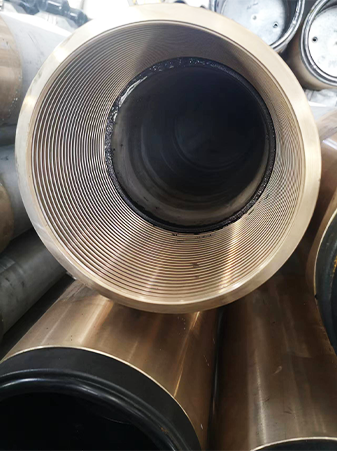- Afrikaans
- Albanian
- Amharic
- Arabic
- Armenian
- Azerbaijani
- Basque
- Belarusian
- Bengali
- Bosnian
- Bulgarian
- Catalan
- Cebuano
- Corsican
- Croatian
- Czech
- Danish
- Dutch
- English
- Esperanto
- Estonian
- Finnish
- French
- Frisian
- Galician
- Georgian
- German
- Greek
- Gujarati
- Haitian Creole
- hausa
- hawaiian
- Hebrew
- Hindi
- Miao
- Hungarian
- Icelandic
- igbo
- Indonesian
- irish
- Italian
- Japanese
- Javanese
- Kannada
- kazakh
- Khmer
- Rwandese
- Korean
- Kurdish
- Kyrgyz
- Lao
- Latin
- Latvian
- Lithuanian
- Luxembourgish
- Macedonian
- Malgashi
- Malay
- Malayalam
- Maltese
- Maori
- Marathi
- Mongolian
- Myanmar
- Nepali
- Norwegian
- Norwegian
- Occitan
- Pashto
- Persian
- Polish
- Portuguese
- Punjabi
- Romanian
- Russian
- Samoan
- Scottish Gaelic
- Serbian
- Sesotho
- Shona
- Sindhi
- Sinhala
- Slovak
- Slovenian
- Somali
- Spanish
- Sundanese
- Swahili
- Swedish
- Tagalog
- Tajik
- Tamil
- Tatar
- Telugu
- Thai
- Turkish
- Turkmen
- Ukrainian
- Urdu
- Uighur
- Uzbek
- Vietnamese
- Welsh
- Bantu
- Yiddish
- Yoruba
- Zulu
china casing coupling
Understanding China’s Casing Coupling Industry
Casing couplings play a vital role in the oil and gas industry, primarily used in drilling processes to connect sections of casing pipes. The casing itself provides the necessary support to maintain the integrity of a wellbore and prevent the collapse of surrounding formations. In the context of global oil and gas exploration, China has emerged as a key player in the manufacturing and supply of casing couplings. This article delves into the significance of China's casing coupling industry, its production capabilities, technological advancements, and the challenges it faces.
Overview of Casing Couplings
Casing couplings are essentially short pipes that fit over the ends of two casing pipes to facilitate connection. Their design typically incorporates threads that allow the casing pipes to be screwed together securely. The effectiveness of a coupling is critical, as it must withstand high levels of pressure and temperature, ensuring the safety and stability of drilling operations. In this regard, the quality of materials used and precision in manufacturing are paramount.
China’s Manufacturing Capabilities
China has positioned itself as a manufacturing powerhouse in various sectors, including the oil and gas industry. The nation boasts a wide array of manufacturing facilities equipped with advanced machinery and technology. Chinese companies specialize in producing high-quality casing couplings that meet international standards, making them favorable suppliers for global oil companies.
The production process involves stringent quality control measures to ensure durability and reliability. Manufacturers in China often utilize high-grade steel and advanced coating techniques to enhance corrosion resistance and improve performance under adverse conditions. This commitment to quality has garnered significant trust from international clients, allowing Chinese manufacturers to capture a substantial share of the global market for casing couplings.
Technological Advancements
In recent years, China’s casing coupling manufacturers have embraced technological advancements to improve production efficiency and product quality. Automation and computer numerical control (CNC) technology have been integrated into manufacturing processes, enabling precision engineering that was previously unattainable. These innovations not only reduce production times but also minimize human error, resulting in higher-quality products.
china casing coupling

Moreover, research and development (R&D) efforts are ongoing to enhance the material properties of casing couplings. The introduction of advanced materials, such as nickel alloy and stainless steel, has improved the performance of couplings, making them suitable for use in challenging environments, including deep-water drilling and high-temperature applications.
Market Dynamics and Challenges
Despite its strengths, the casing coupling industry in China faces several challenges. One significant issue is the competitive nature of the global market. Manufacturers not only compete among themselves but also with suppliers from countries such as the United States, Russia, and the Middle East. To maintain competitiveness, Chinese manufacturers must continuously innovate and improve their offerings.
Another challenge arises from fluctuating raw material prices, which can impact production costs and, ultimately, pricing. The global supply chain disruptions caused by geopolitical tensions and the COVID-19 pandemic have further exacerbated these challenges, making it imperative for manufacturers to develop more resilient sourcing strategies.
Environmental regulations are also tightening, requiring manufacturers to adopt more sustainable practices. This shift toward sustainability presents both an opportunity and a challenge, as companies need to balance compliance with maintaining profitability.
Conclusion
The casing coupling industry in China plays a crucial role in supporting global oil and gas operations. With its advanced manufacturing capabilities, commitment to quality, and continuous technological innovation, China has established itself as a significant player in the market. However, challenges such as fierce competition, raw material price volatility, and stringent environmental regulations necessitate adaptive strategies for future growth.
As the global demand for energy continues to evolve, the casing coupling sector will be pivotal in ensuring that drilling operations are efficient, safe, and environmentally sustainable. China’s ability to navigate these challenges while enhancing its production capabilities will likely determine its position in the global casing coupling market for years to come.
-
Tubing Pup Joints: Essential Components for Oil and Gas OperationsNewsJul.10,2025
-
Pup Joints: Essential Components for Reliable Drilling OperationsNewsJul.10,2025
-
Pipe Couplings: Connecting Your World EfficientlyNewsJul.10,2025
-
Mastering Oilfield Operations with Quality Tubing and CasingNewsJul.10,2025
-
High-Quality Casing Couplings for Every NeedNewsJul.10,2025
-
Boost Your Drilling Efficiency with Premium Crossover Tools & Seating NipplesNewsJul.10,2025







